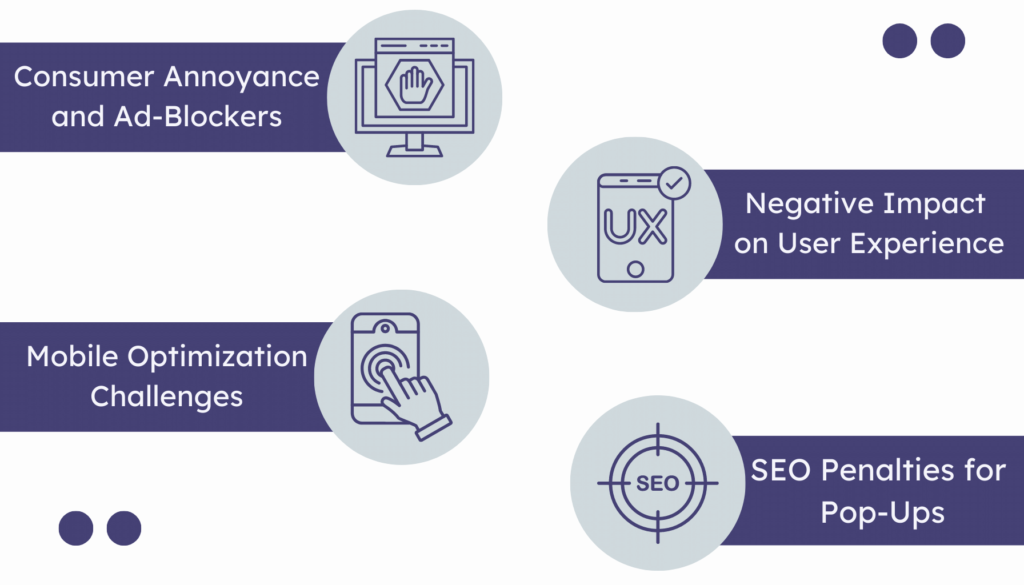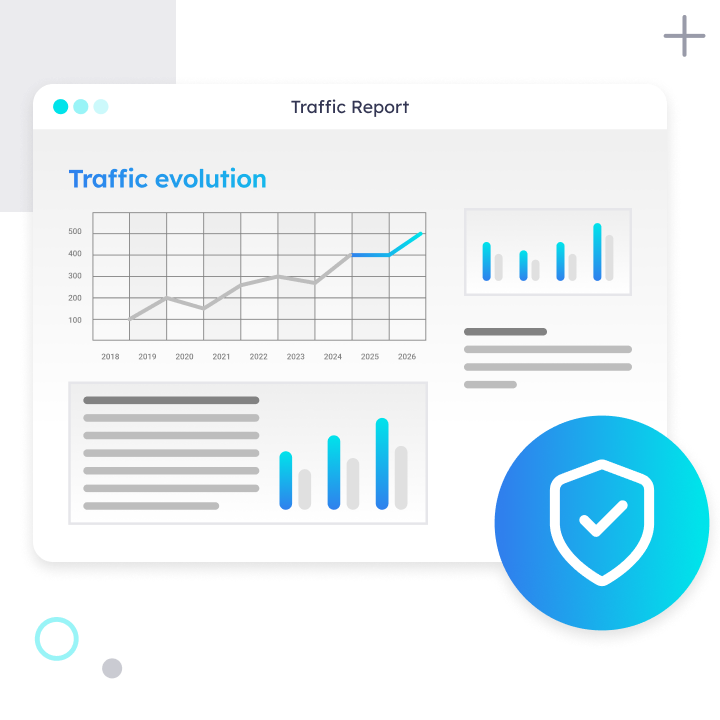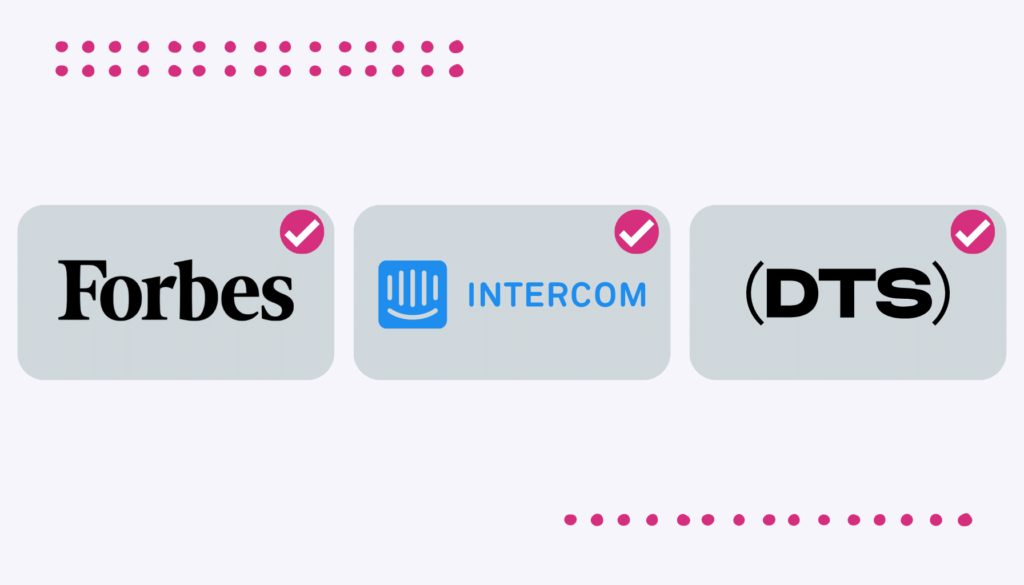
In recent years, pop-ups and overlays have become ubiquitous in the world of digital marketing, serving as a popular tool for capturing leads and driving conversions. However, consumer attitudes are changing, and many users are becoming increasingly frustrated with these intrusive tactics. This has led to the rise of ad blockers and a decline in the effectiveness of pop-ups and overlays.
As we enter 2023, it’s becoming clear that the era of pop-ups and overlays is coming to an end. In this series of blog posts, we’ll explore why CRO trends, like A/B testing, traditional landing pages, pop-ups, and overlays are dying, and what businesses can do to adapt and find new ways to capture leads and drive conversions. In this post, we’ll also explore the role of consumer behavior and data analysis in this changing landscape, and provide practical tips for businesses looking to stay ahead of the curve.
The Problems with Pop-Ups and Overlays
Pop-ups and overlays have been popular tools for marketers to capture leads and drive conversions. However, their effectiveness has been declining in recent years due to various problems associated with them.
Consumer Annoyance and Ad-Blockers
Many consumers find pop-ups and overlays annoying, and some even use ad-blockers to avoid them altogether. According to a study conducted by HubSpot, 73% of consumers dislike pop-ups. Pop-ups and overlays can be detrimental to the user experience, leading to a decrease in conversions.
Negative Impact on User Experience
In addition to annoyance, pop-ups, and overlays can also negatively impact the user experience. They can interrupt the user’s browsing experience and cause frustration, leading to a decrease in engagement and conversions. A study conducted by Nielsen Norman Group found that users often perceive pop-ups as an obstacle that prevents them from achieving their goals, and they would have to invest additional time and effort to close them.
Moreover, pop-ups and overlays can make the website appear cluttered and unprofessional, which can undermine the brand’s credibility. This can also lead to a decrease in trust, which is crucial for building long-term relationships with customers.
Mobile Optimization Challenges
Pop-ups and overlays can be especially problematic on mobile devices, where they can take up the entire screen and be difficult to close. This can be frustrating for users and cause them to abandon the website altogether. According to Google Mobile pop-up ads that ask you to ‘Get the App’ scare away 69% of users. As more and more people use their mobile devices to browse the internet, this issue has become more pressing for businesses that rely on their websites for conversions.
SEO Penalties for Pop-Ups
Pop-ups and overlays can have negative implications for SEO, particularly on mobile devices. In 2016, Google announced penalties for websites that use intrusive interstitials (which include pop-ups and overlays) on mobile devices. This means that using pop-ups and overlays could actually hurt your website’s search rankings. This penalty is in place because Google wants to provide users with a better search experience by ensuring that the pages they land on are easy to use and access on mobile devices.
In addition to the penalties, Google also offers guidelines for using pop-ups and overlays without negatively affecting SEO. For example, they recommend using them sparingly and avoiding ones that cover the main content or are difficult to close. By following these guidelines, you can still use pop-ups and overlays in a way that is effective without harming your search rankings.

Alternatives to Pop-Ups and Overlays
While pop-ups and overlays were once popular methods for capturing leads and improving conversions, the negative impact on user experience and SEO has led to a decline in their use. Fortunately, there are alternative methods that can be just as effective, without the negative consequences.
Hyper-Personalized Micro-experiences
Paving the way for the future of digital experiences is Pathmonk Accelerate, an AI-powered software that delivers hyper-personalized micro-experiences to website users. By analyzing user behavior and intent in real time, Pathmonk Accelerate delivers relevant content, offers, and calls to action that is tailored to each user’s needs and interests. This can lead to a significant increase in conversions, without interrupting the user experience.
Increase +180%
leads
demos
sales
bookings
from your website with AI
Get more conversions from your existing website traffic delivering personalized experiences.

Static Opt-Ins
These forms are typically placed in non-intrusive areas of a website, such as a sidebar or footer, and offer users the opportunity to sign up for a newsletter or download a free resource.
Slide-Ins and In-Line Opt-Ins
Slide-ins are forms that appear discreetly on the side or bottom of a page and can be triggered by user behavior, such as scrolling or clicking a specific button. In-line opt-ins, on the other hand, are forms that are integrated into the content of a page, making them less intrusive.
Free template: CRO audit checklist
Discover everything you need to start identifying drop-offs and increase conversions.

Leading Companies That Have Stopped Using Pop-Ups
Many companies have realized the negative impact that pop-ups and overlays can have on user experience and conversions, and have therefore phased them out.
Forbes
Forbes is one of the most popular news websites in the world, but it has faced criticism in the past for its use of pop-ups. The company eventually decided to ditch pop-ups in favor of a more user-friendly experience. Instead, Forbes now uses a static opt-in form that appears at the bottom of each article. The form invites readers to subscribe to Forbes’ newsletter, but it is placed in a non-intrusive area of the page.
Intercom
Intercom is a messaging platform for businesses that provides live chat, email, and social messaging services. The company used to use pop-ups to promote its products and services, but it found that the pop-ups were negatively impacting its user experience.
Intercom replaced the pop-ups with a more subtle slide-in form that appears at the bottom of the page. The slide-in form is less intrusive and allows users to engage with Intercom’s content without interruption.
Death to Stock
Death to Stock is a stock photography company that provides high-quality, royalty-free images to businesses and individuals. The company used to use pop-ups to promote its newsletter and products, but it found that the pop-ups were negatively impacting its user experience.
Death to Stock removed the pop-ups and instead used a static opt-in form that appears at the bottom of its website.

Conclusion
The use of pop-ups and overlays has been a popular tactic in CRO, but their effectiveness is declining in 2023 due to consumer annoyance, negative impact on user experience, mobile optimization challenges, and SEO considerations.
However, there are alternative methods that businesses can implement to achieve their CRO goals without resorting to intrusive and annoying pop-ups and overlays. Hyper-personalized micro-experiences from Pathmonk Accelerate, static opt-ins, slide-ins, and in-line opt-ins are all effective options that have been successful for many businesses.
It’s important that you carefully consider the impact of your CRO tactics on user experience and take steps to ensure that they are not detracting from the overall user experience. By selecting the right CRO methods, you can improve your conversion rates while also providing a positive user experience.








